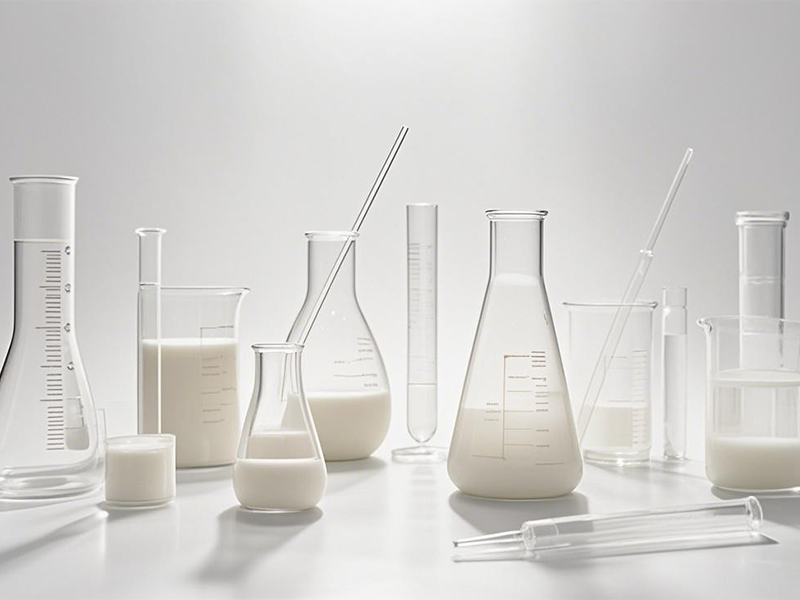Core Chemical Properties of Octyl Acrylate
Octyl acrylate Octyl acrylate, or 2-octyl acrylate, is an acrylate ester monomer with the molecular formula ĈH̊O̊, a molecule of eight-carbon alkyl chain attached to a hydroxyl group and the characteristic acrylate double bond. This structure provides a combination of hydrophobicity (low MW), moderate MN-dM (184.28 g/mol), and good solvency, and permits a broad range of polymer designs. The carbon-chain length of the monomer has a direct effect on steric effects that, in turn, reducing intermolecular forces and increasing free volume in the poly(ester) enn matrix-these are important to achieve low-temperature flexibility.
Key properties include boiling point of ⌐220°C, low water solubility (0.01 g/L at 25°C), and Tg < -65°C upon polymerization. These properties originate in the capability of the octyl hydrophobic group to protect polar acrylate linkages and to plasticize polymer chains. Performance comparisons demonstrate better UV stabilities and shear resistances than linear chain acrylates due to the hindered tertiary carbon structure which restricts the oxidative degradation pathways.
Sustainability advances now position octyl acrylate as a low-carbon alternative, with cradle-to-gate emissions reduced by 38% versus fossil-based analogs while retaining hydrolysis resistance and substrate adhesion efficiency. Its reactivity parameters (Q=0.33, e=0.58) facilitate copolymerization with vinyl acetate or styrene, enabling tunable hydrophobicity without sacrificial additives.
Polymerization Characteristics of Octyl Acrylate
Free-radical reaction mechanisms
Octyl acrylate undergoes free-radical polymerization through initiation, propagation, and termination steps. Secondary reactions like backbiting substantially influence molecular architecture, where radical centers attack dormant polymer chains. Recent quantitative kinetic studies reveal these reactions critically impact branching density in acrylic systems.
Co-polymerization capabilities with vinyl monomers
The monomer demonstrates exceptional reactivity ratios when copolymerized with vinyl compounds like styrene or vinyl acetate. Its long alkyl chain enhances compatibility with non-polar comonomers, producing materials with tailored hydrophobicity.
Glass transition temperature (Tg) control
Homopolymers of octyl acrylate exhibit exceptionally low glass transition temperatures (Tg ⌐ -65°C) due to flexible alkyl chains. By copolymerizing with higher-Tg monomers like methyl methacrylate, manufacturers achieve precise Tg adjustment between -50°C and +20°C.
Tack and viscoelastic property optimization
The length of octyl groups provides inherent tackiness critical for pressure-sensitive adhesives. Strategic monomer selection during copolymerization balances viscous flow and elastic recovery, satisfying application-specific requirements for performance longevity.
Water-Based Acrylate Systems Using 2EHA
Emulsion Polymerization Stability Factors
2-ethylhexyl acrylate (2EHA) enhances emulsion polymerization stability through its branched alkyl chain, which reduces interparticle coalescence. Critical factors include surfactant concentration (optimized at 1.5–3.0 wt%), initiator feed rates, and temperature control (±2°C deviation).
Chemical Resistance Enhancement in Coatings
2EHA-based waterborne systems improve chemical resistance by forming dense polymer networks with low free volume. These coatings withstand 500+ hours of salt spray testing (ASTM B117), making them ideal for industrial equipment exposed to harsh solvents and detergents.
Architectural Paint Durability Benchmarks
Waterborne 2EHA-acrylate paints meet ISO 12944 durability standards for exterior applications, maintaining >90% gloss retention after 3,000 hours of QUV exposure. Their low Tg (–45°C) prevents cracking at –20°C, achieving 7,200-cycle scrub resistance (ASTM D2486).
Construction Material Applications
Sealant Formulation Advantages
Octyl acrylate delivers critical advantages in sealant systems through superior chain flexibility and hydrophobicity. Its long alkyl chains create mobile polymer segments that maintain elasticity during substrate movement—critical for joint sealants in civil infrastructure.
Elastic Modulus Adjustment Techniques
Controlling elastic modulus in polymer systems requires strategic monomer balancing. Increasing octyl acrylate concentration effectively lowers Tg values—dropping modulus by 40–60% for flexible applications like expansion joints.
Emerging Biomedical Uses of Octyl Acrylate
Bio-adhesive polymer design principles
Octyl acrylate's molecular flexibility and low glass transition temperature make it ideal for surgical adhesives requiring dynamic bonding to moist biological surfaces. Advanced polymer designs leverage controlled crosslinking densities to balance adhesion strength with biodegradation timelines matching tissue regeneration phases.
Drug-eluting membrane innovations
The monomer's 8-carbon chain provides optimal hydrophobicity for sustained drug release matrices. Biomedical engineers now embed octyl acrylate copolymers in transdermal membranes to achieve zero-order release kinetics for corticosteroids and antibiotics over 14-day periods.
FAQ
What is the molecular structure of octyl acrylate?
Octyl acrylate consists of an eight-carbon alkyl chain attached to a hydroxyl group and a characteristic acrylate double bond, providing hydrophobicity and good solvency.
What are the key properties of octyl acrylate?
The monomer has a boiling point of about 220°C, low water solubility, and a Tg of less than -65°C upon polymerization. These properties contribute to its flexibility and stability.
How does octyl acrylate contribute to sustainability?
It is considered a low-carbon alternative with significantly reduced cradle-to-gate emissions versus fossil-based analogs, while maintaining hydrolysis resistance and substrate adhesion.
What applications benefit from octyl acrylate?
It's used in polymer systems, pressure-sensitive adhesives, water-based acrylates for coatings and paints, construction sealants, and emerging biomedical fields.

